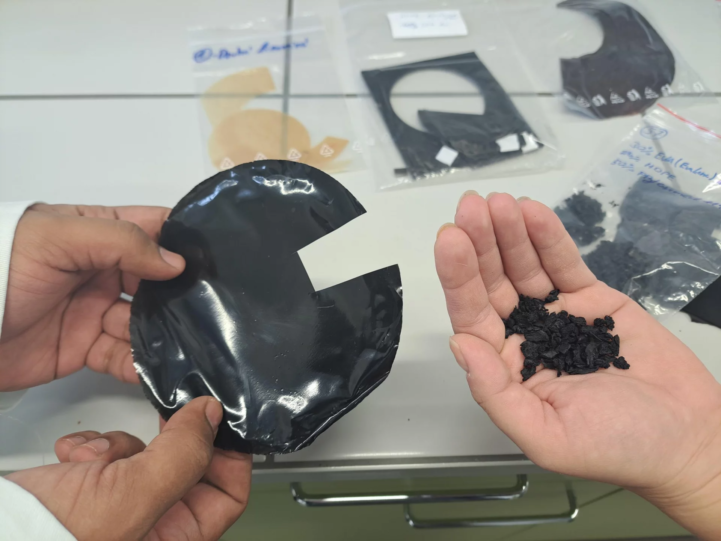
Czechs have developed special wrapping paper for electronics and explosives
15. August 2023Zlín – 15/08/2023 Czech researchers have developed a special paper that conducts electricity well and prevents unwanted effects of static electricity thanks to the use of modified cellulose. The new material can be used in the packaging of electronics sensitive to static electricity. Another use is, for example, for the packaging of explosive products, where static electricity could cause an explosion. Researchers from the Polymer Systems Center of the Tomáš Bata University in Zlín worked together with colleagues from the Center of Organic Chemistry s.r.o. on the project, which was financially supported by the Technology Agency of the Czech Republic (TA ČR). and the company Synpo, a.s.
As part of the Green Deal initiative, the trend is to switch to packaging materials from renewable sources that are not plastic-based and can be further recycled. All manufacturers are therefore trying to move away from plastic packaging and replace it with more ecological variants that do not require the extraction of mineral raw materials and their subsequent release into the environment, either directly or in the form of carbon dioxide after burning.
“Plastic consumption is huge in the packaging of electronics alone, and with the increasing share of online shopping, their production, which pollutes the planet, is increasing. That’s why every solution for switching to another type of packaging is welcomed and supported,” said Petr Konvalinka, chairman of the Technological Agency of the Czech Republic (TA ČR), which supported the project with an amount of almost twelve million crowns from the EPSILON Program. In the field of packaging sensitive electronics, explosives and other products that can be damaged by static electricity discharges, it has not been possible until now to use paper packaging without unwanted contamination of the paper material. Additives based on carbon fibers, graphite, etc., which are foreign elements in the paper, must be added to it.
“A new approach to the production of paper with antistatic properties is based on the direct modification of paper cellulose. Thanks to a patented procedure, a conductive polymer is inserted into it. The resulting cellulose then has the required surface resistance and is mixed using a standard procedure in paper pulp. Any electrical charge is therefore easily transferable in the final paper even with a relatively low concentration of polymers,” explained Lubomír Kubáč from the company Centrum organéké chemie s.r.o., which has been dealing with innovative applications of conductive polymers for a long time.
The paper thus acquires the ability of so-called charge dissipation. This means that any electrical charge is completely removed from the place where unwanted phenomena could occur. With the new method, it is possible to prepare three variants of paper, depending on the concentration of the polymer in the cellulose. The first is conductive paper, preventing the formation of a static charge. It can be used for common purposes when it is necessary to prevent the formation of static electricity, especially when packaging products sensitive to static discharge. The second type of paper enables effective discharge of the charge from the packaged goods. It is mainly intended for packaging
electronics, explosive materials, detonators and the like. The third type of paper can be used as a substrate for flexible electronics or sensor systems. In addition to paper, the researchers, together with the Synpo company, prepared a base coat containing conductive cellulose for concrete substrates for clean operations. Modified conductive cellulose was also used for the production of conductive plastics in cooperation with the Polymer Systems Center at the Technical University of Applied Sciences in Zlín.
“In addition to the development of special paper, the project also included research into the possibilities of using modified cellulose fibers to improve the antistatic properties of polymer materials, which was our task. Here, too, we have succeeded in developing a material with good antistatic properties, which is used not only in packaging for electronics, but also in products intended for the interior equipment of spaces with a particular risk of explosion. Specifically, these are new types of floor coverings or coatings,” said the director of the Polymer Systems Center of TUB, prof. Vladimír Sedlarík.


